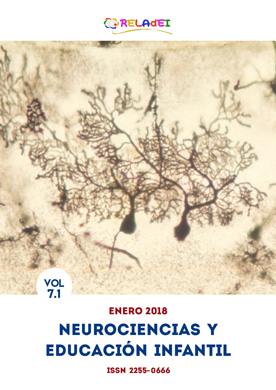Vol 7 No 1 (2018): Neurociencias y educación infantil, Monográfico. Introducción, pages 52-60
Submitted: 06-07-2018
Accepted: 06-07-2018
Published: 13-07-2018
The development of the human being is the largest biological process known both for its complexity and for its characteristics of plasticity and vulnerability. In addition to this complexity, brain development is multifaceted as it affects all dimensions of the individuals. Brain development is particularly intense in the first 1000 days after conception, including both the intrauterine period and the first years after birth. The structuring and organization of the different areas of the brain in the postnatal period occur in parallel, in a non-compartmentalized way and in “waves” corresponding to different ages or age groups that characterize the “temporal window” of each stage of neurodevelopment. These “waves” generate development curves whose extension and peaks are expressed differently depending on the age of the children. It is important to note that all these stages are sensitive to the stimuli and conditions of both the intrauterine environment and the external environment after birth.
Neurosciences, Brain and human development, Relationship inheritance-medium, Plasticity and cerebral vulnerability, Epigenetics of child development


